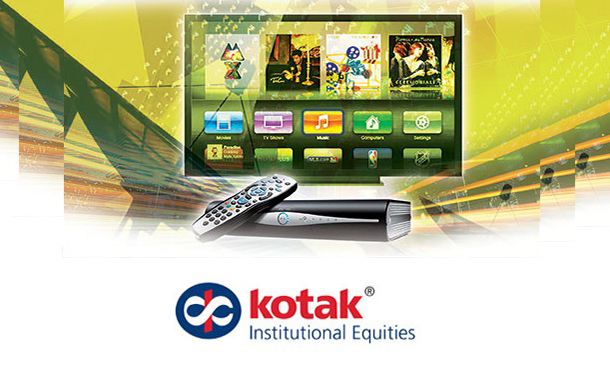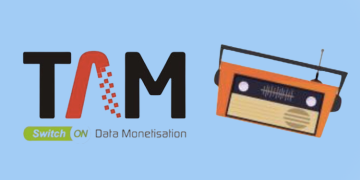The TRAI has released tariff order and interconnect regulations to bring in transparency and non-discrimination in broadcaster-distributor contracts and protect consumer interest. The Telecom report from Kotak believes that the implementation of this regulation would enhance the bargaining power of distributors versus broadcasters. As per the report Dish TV would most likely benefit. The impact on Zee would be negligible, if any, given the strength of its bouquet. Sun can potentially gain, but its upside is contingent on digitization in TN.
Key objective of TRAI tariff order and interconnection regulations:
TRAI’s key objective is to standardize/regularize B2B content-carriage deals between broadcasters and distributors to bring in transparency and eliminate discrimination (scale-led or otherwise), and TRAI believes that the existing bouquet-led selling of content forces consumers to pay for unwanted content. It seeks to provide consumers’ freedom to pick and choose channels at an affordable price, essentially enabling optimization of subscription spends.
Several potential challenges ahead—legal, administrative and practical:
The TRAI has prescribed implementation of regulations in six months. Whereas the report is sceptical of timely implementation of it in the true spirit given the pending court cases. Star has challenged jurisdiction of TRAI citing violation of provisions of Copyright Act that allows it freedom to contract. There can be more court cases challenging clauses of regulation or seeking deferment till completion of phase-IV digitization, the lack of administrative machinery (technology, manpower and wherewithal) especially in case of small players, this regulation reduces pricing flexibility of the industry. It may benefit distributors in the near term, but any regulation restricting pricing flexibility can hurt the industry’s long-term ARPU growth prospects.
Implication—positive for distributors and potentially negative for broadcasters:
Although it is difficult to factor in all permutations and combinations and game theory of involved stakeholders, it is certain that these regulations would increase bargaining power of distributors. According to the report only top 30-50 channels may attract sizeable consumer interest. Distributors may refuse to pay content cost and seek carriage for the balance 300-500 channels carried by its platform. Broadcasters would be compelled to yield in order to maintain the reach of its channels which is essential for protecting its advertising revenue stream. We believe broadcasting networks with 3-4 driver channels are better placed to protect their subscription revenue streams; weak standalone channels may be most impacted. The extent of upside for distributors would be governed by the ability of weak broadcasters to pay.
Thought on key aspects:
- Will flexibility to consumers reduce industry’s subscription revenue pool? Not likely Says the report due to —(1) Demographic composition of a typical Indian household calls for at least 25-30 pay channels (spanning GEC, movies, regionals, sports, news and English genres). There is a provision of access fee of up to Rs130/month (excluding taxes). Even if a household subscribes for 10 popular pay channels on a-la-carte basis, it may result in subscription fee of more than Rs100 (excluding taxes). It is unlikely that value subscribers (base pack/ low-ARPU subscribers) would be able to optimize its subscription spend. If at all, they may receive less content for the same price going forward. There is room for premium subscribers (HD, multiple TVs) paying more than Rs500/month per STB to optimize its subscription spends especially in case of nuclear families in urban markets.
- Distributors are expected to price and package channels such that consumers continue to find bouquet appealing. We also believe industry will not encourage or promote a-la-carte buying: (1) LCOs would likely discourage a-la-carte buying, (2) difficulty/hassle in opting for a-la-carte (through smses or call centers) will act as a deterrent.
- Will regulation reduce scale-led advantage of distributors? Possible to some extent. TRAI intends to eliminate discrimination and bring in transparency between distributor-broadcaster contracts. As per our understanding, the permissible discounts would likely be on penetration milestones (percentage penetration as against absolute scale). Thus, we believe the scale-led advantage of larger distributors can moderate. That said, we do note that it will be difficult to track and monitor placement and marketing deals which may be used as an avenue to pass on scale-related benefits.
- Will strong players become stronger and weak weaker? Even as we appreciate the intent of TRAI, we believe the outcome may not be as desired: (1) there is a high possibility that low-ARPU subscribers may get less content for the same price whereas premium subscribers may be able to optimize their subscription spends. More so, given uniform pricing across urban markets and rural markets notwithstanding difference in purchasing power, (2) standalone channels and small broadcasters may be forced to pay higher carriage to maintain reach (at present DTH garners negligible carriage; post implementation DTH may demand higher carriage). Some channels may not be able to absorb the increase in costs, (3) small distributors who do not have wherewithal for technological changes may find it difficult to implement.
- Will value shift between stakeholders within the value chain? Yes, as explained earlier we expect distributors to gain at the margin.
- Upselling and HD push. Access fee under the new regulation would contribute meaningfully to distributors’ revenue stream. Additionally, DTH should also see a sharp increase in carriage revenues. Given this, it has to be seen if the distributor ecosystem remains as focused on upselling and pushing HD. The report believes that the incentive for them to upsell is lower under the new regulation.
Potential long-term benefits and risks from regulations
- It is not clear if regulations would weigh on long-term ARPU growth. Intuitively, more flexibility to choose content can make optimization of subscription budget easier at household level. Further, barring top channels, price of most pay channels would be negligible and many channels would convert to FTA. Monetization of niche channels may be difficult at the margin.
- The time lag between technical implementation of digitization and monetization is 1-2 years. In fact even after 3-4 years, Cable tariffs and MSOs ARPU in phase I-II markets lag expectations. Implementation of regulation would force cable to push package tiering and raise cable tariffs in line with DTH. This assumes that LCOs align with it and broadcasters do not make any payments to cable other than prescribed by the regulation.

















